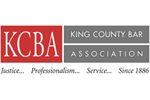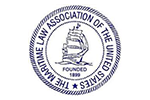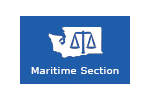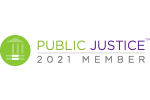Wrongful Death Attorneys
Hong Kong Ferry Collision Has Lessons for Ferries In Washington
It is not clear how two vessels could collide with each other on a clear night, when weather was not a factor. The Sea Smooth ferry and the Lamma IV , owned by the Hong Kong Electric Company, ran together on October 1, 2012 at approximately 8:23 p.m. Reportedly, there were 121 people plus three crew members on board the Lamma IV, which was taking workers and their families out to see a fireworks display and celebrate China’s National Day.
Survivors indicated that the impact knocked passengers from their seats and the Lamma IV began to sink quickly, during a chaotic attempt to locate life jackets. It was later determined that a large hole in its engine room had been the cause of its rapid sinking. The government reported that 101 people went to the hospital, 66 were discharged and four had more serious injuries or were critical. Most of the injuries were sustained by passengers and all of the 38 fatalities were on board the Lamma IV.
Police arrested seven people, including both captains, for allegedly endangering the lives of passengers by negligently operating their vessels and “failing to exercise the care required of them by law.”
After the collision, the Sea Smooth ferry, operated by Hong Kong and Kowloon Ferry Holdings Ltd, failed to stop and render aid to the sinking Lamma IV and continued to its destination. The Sea Smooth has a 200 passenger capacity and a top speed of around 28 miles per hour. The Lamma IV was operating well below its capacity of 200 people. Neither vessel had any safety issues when they were last inspected.
Victor Li, head of the Hong Kong Electric Company, said they were going to make emergency payments of roughly $26,000 to families who lost loved ones. Nelson Ng, with Hong Kong and Kowloon Ferry Holdings Ltd, said that the captain of the Sea Smooth was hospitalized with rib injuries and was depressed about the accident.
Speculation was rampant as to the actual cause of the crash. Some said that the lights on shore might have impaired the visibility of the navigation lights on the vessels. Others thought that the captain of the Lamma IV might have been going too fast and was more interested in finding a good position for the fireworks display than watching out for other vessels. Finally, there was speculation that the captain of the Sea Smooth might have been lax in his attention, simply because of overconfidence from running the same route over and over.
Washington State Ferries is the largest ferry operator in the United States, transporting more than 23 million passengers across the Puget Sound and its inland waterways. When Washington first introduced high-speed ferries, the state of Washington established an independent blue-ribbon panel to assess the adequacy of requirements for passenger and crew safety aboard the Washington state ferries. Recommendations included employing adequate response plans should a collision such as the tragic accident in Hong Kong arise. The study concluded that the skills and responses of the ferry crews were the crucial element to adequately responding to an emergency situation, and training, drills, and exercises were essential for emergency preparedness.
As the events in Hong Kong demonstrate, the failure by a ferry crew to respond adequately to an accident, or to help passengers quickly locate and secure life vests, can lead to injuries and loss of life. However, the overarching conclusion of the Washington state study was that emphasis should be placed on reducing the likelihood of accidents in the first place. Maintaining proper speed, attention to navigation, and adequate running lights when moving at night are all considered basic safety precautions.
In the event of an accident, ferry workers and their injuries are not handled like state workers’ compensation cases for injuries to employees that occur on land. The Jones Act applies to injuries sustained by ferry workers that occur on navigable waters. For passengers injured in a ferry collision, consulting with an experienced maritime attorney who understands the requirements of safe operation of a ferry is also essential.
If you or someone you know has suffered injuries or lost a loved one from working on a ferry or been injured as a passenger on a ferry, you should contact an experienced Seattle maritime attorney. John Merriam and Gordon Webb have nearly 50 years of experience handling a wide variety of maritime law matters.
Contact us through our website or call us toll free at 877.800.1007 for a no obligation consultation about your particular case. All of our cases are handled on a contingency basis.
Other Resources:
Hong Kong Ferry Crash: Dozens Killed As Charter Boat Hits Ferry, Sinks Near Lamma Island , Huffington Post, Article by Kelvin Chan, October 2, 2012













